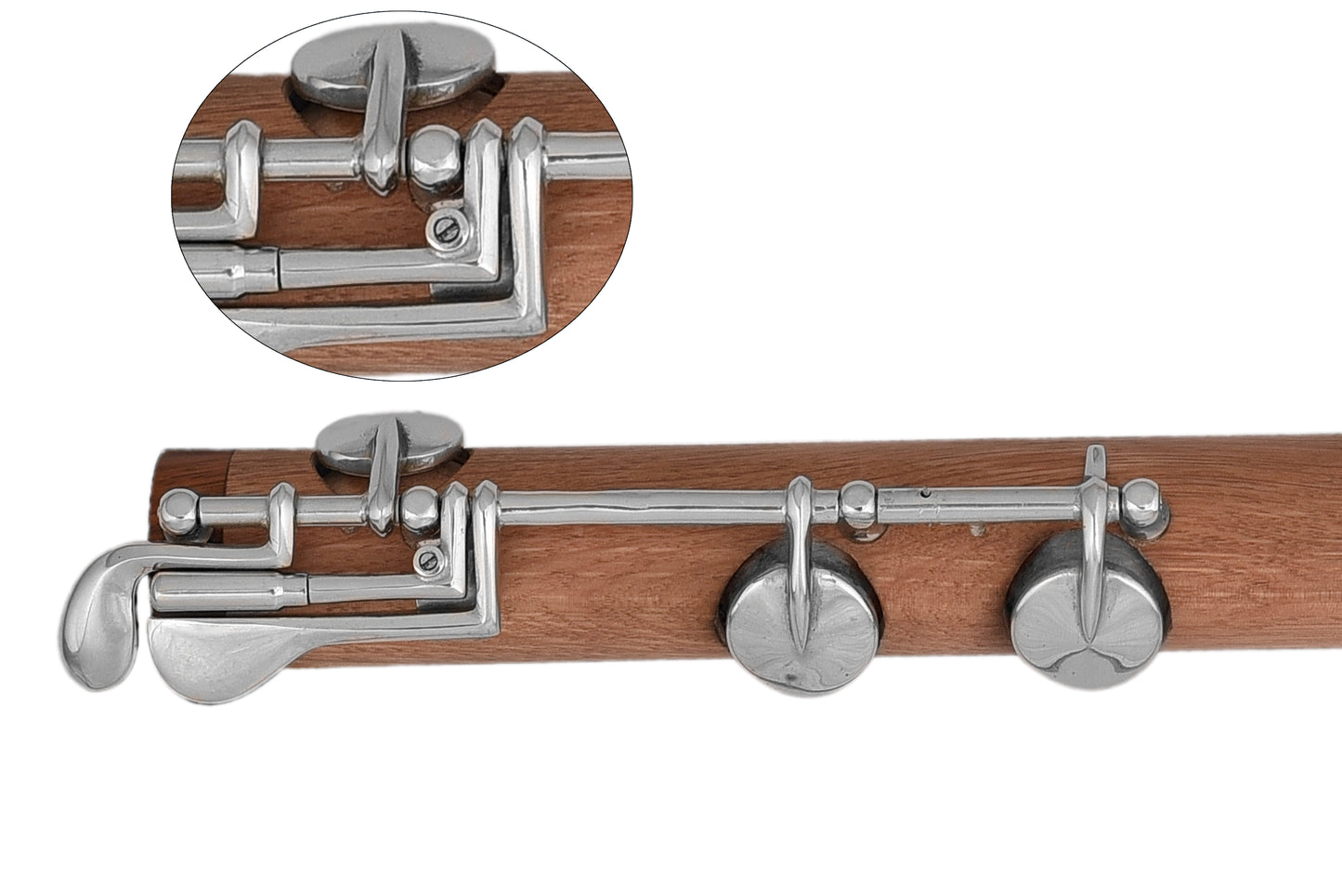


This handcrafted Pratten-style Irish flute is modeled after the powerful 19th-century designs of Robert Sidney Pratten, renowned for their rich tone and projection. It produces a strong, resonant sound across the entire range—from low D down to C—making it ideal for traditional Irish, folk, and session music.
Features:
- Crafted from Olive wood.
- The hand-turned wooden rings reflect traditional craftsmanship, adding a touch of natural grace and period elegance to the instrument.
- The flute includes a tuning slide headjoint and a screwed stopper for precise pitch adjustment and fine tuning.
- Eight solid brass keys — for C, B♭, G♯, F (long), F (short), D♯, C♯, and C.
- The C♯ and C keys include an adjuster screw to ensure accurate balance between them.
- Each key is fitted with a leather pad and steel spring.
Usage Today:
- Traditional Irish and Celtic music sessions
- Folk and ensemble players seeking a full, commanding tone
- Flutists who need extended lower notes down to C for broader repertoire
- Students and enthusiasts seeking professional performance at an accessible price
- A set of extra leather pad for the keys
- Fingering chart for simple system (Irish) fingerings
- Care instructions for wood and key maintenance
- A plush-lined wooden case for safe storage and transport
- Expertly built with musical precision and deep respect for tradition, this 8-key Pratten-style flute combines power, expressiveness, and fine craftsmanship—bringing both historical authenticity and modern playability to every musician.



